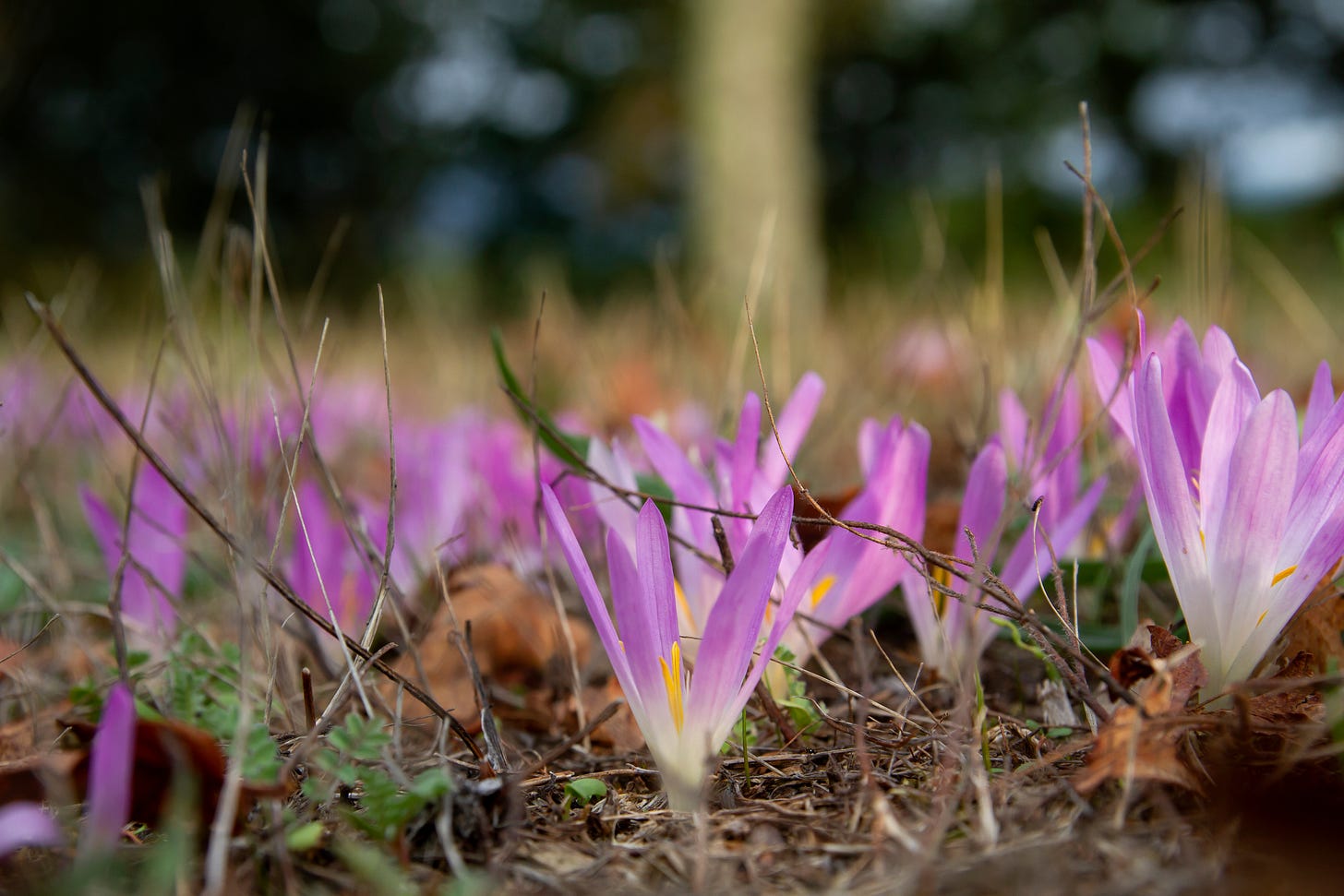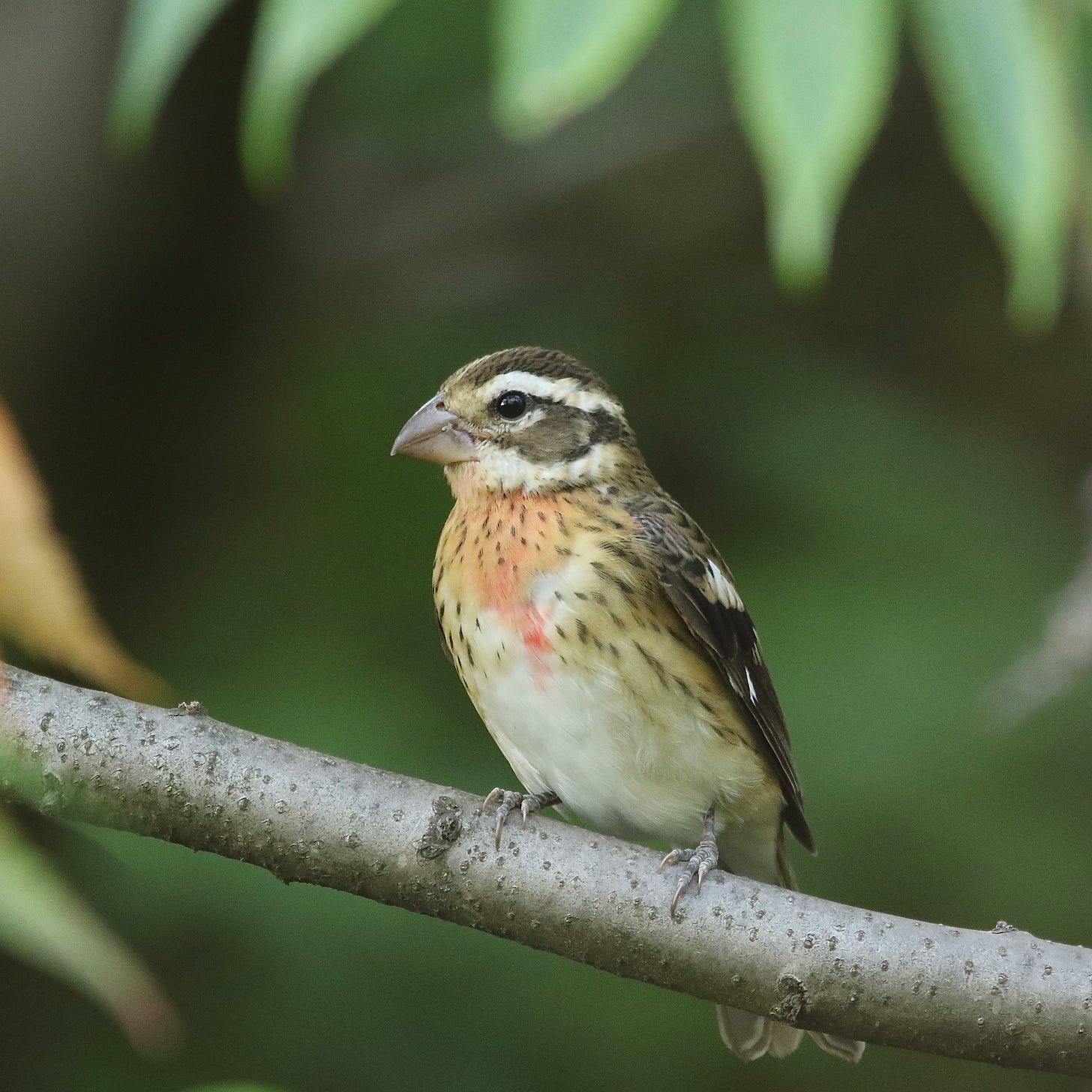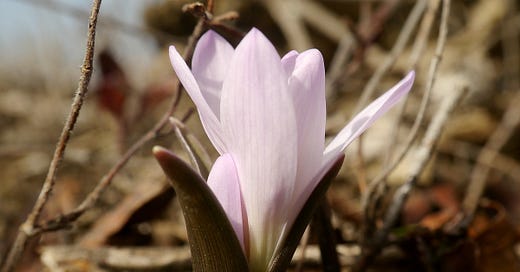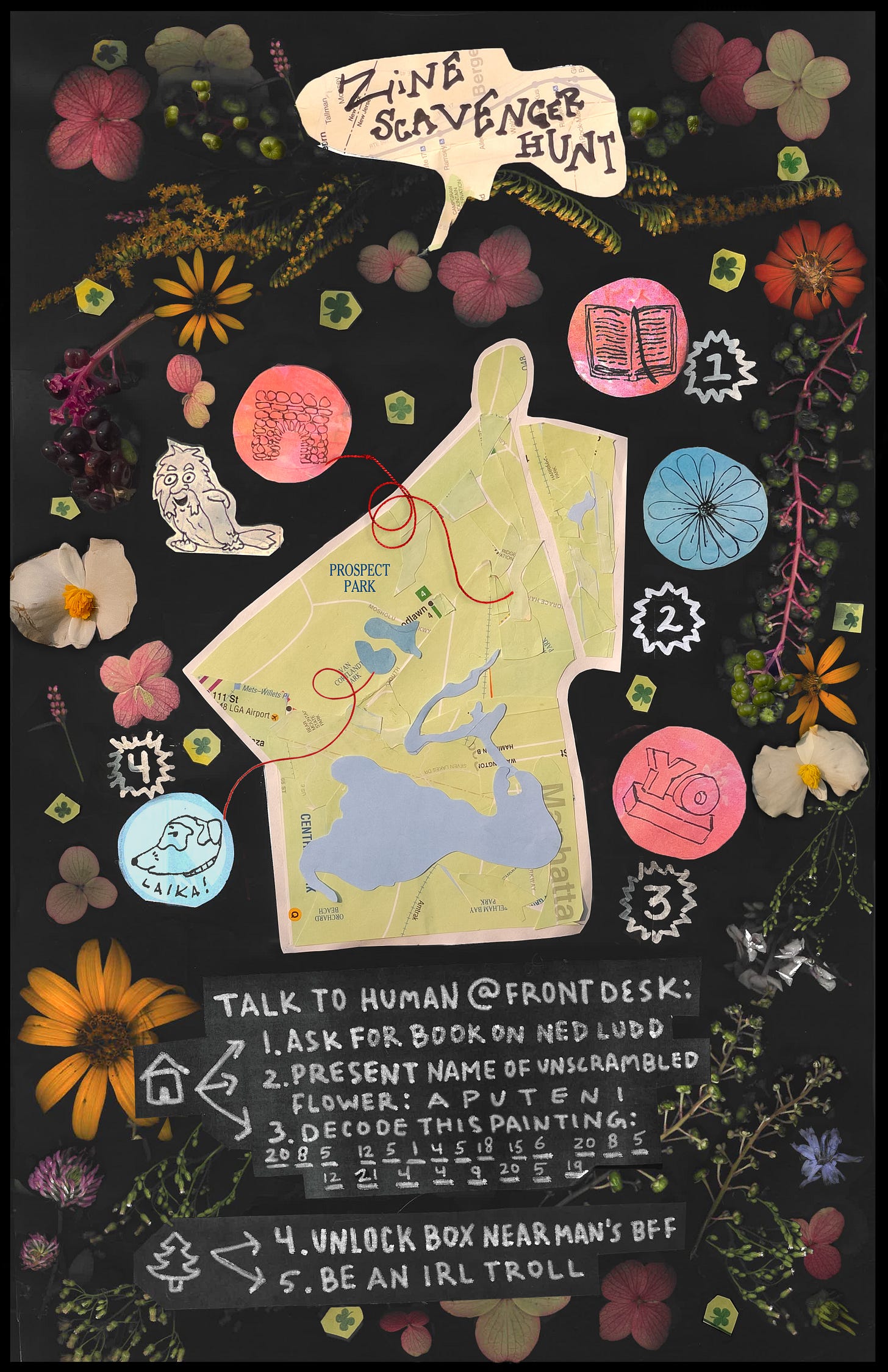MICRO-SEASON — SEP 16 - SEP 22
Naked ladies, thrushes, repurposed plastic, scavenger hunts, and more
OVERHEARD:
“Ohmygod-ohmygod-ohmyGOD! You’ll like, never guess who I saw in Central Park last night, Becky! …Coyote! And he was like, with someone.”
Becky: I thought he was just like, a lone wolf, or whatever.
“No, Coyotes are total monogamists. They mate for life.”
Becky: That’s like, sof*ckingcute.
“You know I like him how can you even say that I hate you Becky.”
UPDATES & ANNOUNCEMENTS
You’re invited to bird Lentol Garden, a BQE-adjacent oasis, in honor of Climate Week NYC. We’ll be there this Saturday, September 28th, at 8am. The garden is small, so after 30 quick minutes of noticing we’ll shuffle over to our regularly scheduled McGolrick sesh.
Day Owl and McGolrick Bird Club are new partners. Day Owl makes beautiful bags entirely out of PFAS-free, recycled, landfill-bound materials. So if you need a new pack for the holiday season, take 20% off your first order via code MBCTITMOUSE20. Stay tuned for more.
Usal is throwing a closing party for its NYC Residency tonight, and we’re going. Meet other bio-curious New Yorkers! RSVP, then just show up!
You may have read about NYC’s Luddite Club in the NYT. It’s a group of teens who forego social media / smartphones and prioritize IRL experiences. They’re doing a scavenger hunt in Brooklyn, now ‘til October 13. If you have time, go for their walk. You’ll be rewarded with sweet zines and, hopefully, some time off your phone. Find more info on their site and download the map here. Ask us about a scavenger birding outing and maybe we’ll organize a twofer.
MICRO-SEASON AUG 26—SEP 8
Time is a thickness. It is not immaterial. It is our very matter – “a transcorporeal stretching between present, future, and past…our bodies as archives of climate…making future climates possible”. — Sophie Strand
Current Japanese micro-season: Swallows leave. As for McGolrick Park, New York City and perhaps even larger swathes of the eastern US, we notice—

Chimney Swifts leave · First plague of Common Grackles · Northern Flickers visit · Garden Dahlias bloom · White Snakeroot flowers · Asters & Goldenrods commune · Naked Ladies appear · First of season Red-bellied Woodpecker, Ruby-crowned Kinglet, Swainson’s Thrush · Canada Geese fly south
Shoutout McGolrick’s resident Demeter Lauren Clark for reminding your correspondent that Asters & Goldenrods, when growing together, both receive more pollinator visits than they would if growing alone. More on that here, in an excerpt of Braiding Sweetgrass by Robin Wall Kimmerer
White Snakeroot, native to the eastern US, is named for the indigenous medicinal practice of applying its root poultices to snake bites. The plant, though an efficient salve, is very toxic to humans if ingested. When pioneers’ livestock were moved onto “unsettled” eastern forests, they let them eat snakeroot. Its toxins passed from herds to humans via milk and meat, killings thousands, including Abraham Lincoln’s mom! Before scientists identified the plant as the poisonings’ source, they simply called the mysterious ailment “milk sickness” [source]
BIRD REPORT

Who’d McGolrick Bird Club notice in situ this week?
Rose-breasted Grosbeak · American Redstart · Ovenbird · Magnolia Warbler · Red-bellied Woodpecker · Canada Goose (flyover) · Northern Parula · Black-throated Green Warbler · Black-and-white Warbler · Veery · Swainson’s Thrush · Scarlet Tanager · Blue-headed Vireo · Cedar Waxwing · Ruby-crowned Kinglet · Double-crested Cormorant (flyover) · Northern Flicker · Gray Catbird · Cooper’s Hawk · American Kestrel · Downy Woodpecker· Red-eyed Vireo · Blue Jay · Northern Cardinal · Common Grackle · Laughing Gull · Black-throated Blue Warbler · Baltimore Oriole · Red-tailed Hawk · American Crow · Rock Pigeon · European Starling · American Robin · House Sparrow · Mourning Dove
Feel like you’re missing the migration gods’ missionaries? For the run of September, join us on Tuesday and Friday mornings, when birds are most active, starting around 6:30am. Just show up
Note that many of the above birds were seen wearing their “Female” plumage—what migrating birds of both sexes often sport in fall
Learn all five grosbeak species found in the US
MICRO-REHASH: THRUSHES
Knowing types of birds by sight can be a solid foothold from which new noticers achieve species-level familiarity.
Chickadees, nuthatches, thrashers, jays … you’re perhaps vaguely familiar with these words. They’re bird types, mate.

A primo bird type to know: thrush. (Family: turdidae LOL.) American Robins, one of the most common birds in the US, are thrushes. You’ve seen that thrush for sure: plump, big-eyed, medium-sized, grass dwellers. Let’s absorb that shape, that lewk, then transpose it to the four most common migrating thrushes who are passing through NYC, like, right now:
Hello, handsomes!
Firstly, do you see how these birds, in shape and feature, kinda look like discolored Robins? (They’re slightly smaller than Robbies IRL.)
Secondly, you may notice that while the light fronted, cinnamon backed Veery and the rusty, boldly spotted Wood Thrush are distinctively plumaged, the Hermit and Swainson’s ain’t. Those trickier-to-tell-apart species’ diagnostic differences are:
Hermits have, relative to their light brown backs, reddish tails
Swainson’s tails do not contrast with their backs
Swainson’s have buffy lores—the area on each side of a bird's head between the eye and beak—that form a sorta spectacles shape
Go ahead, compare those last two thrushes again ☝️.
Cool? Thrush thing make sense? Yeah? PROVE IT. Q: Which look is giving Thrush?










